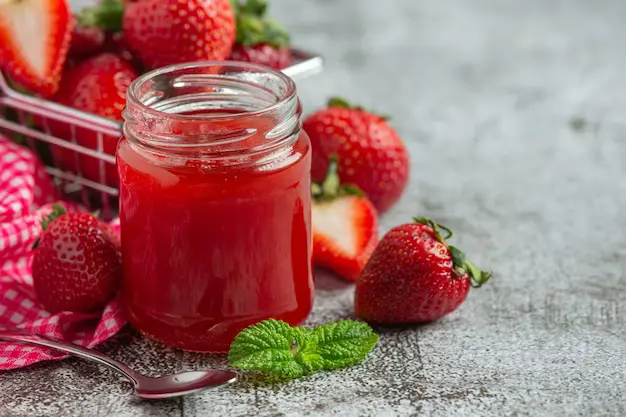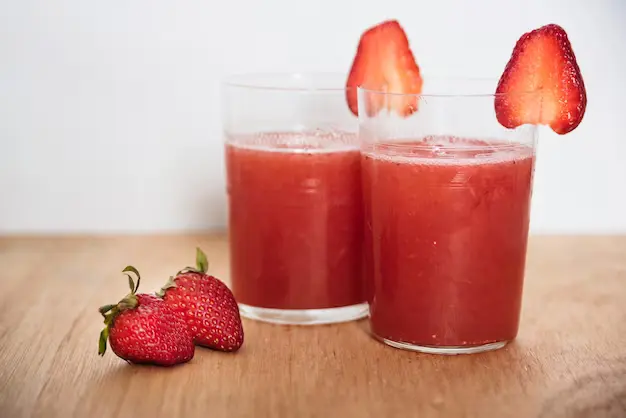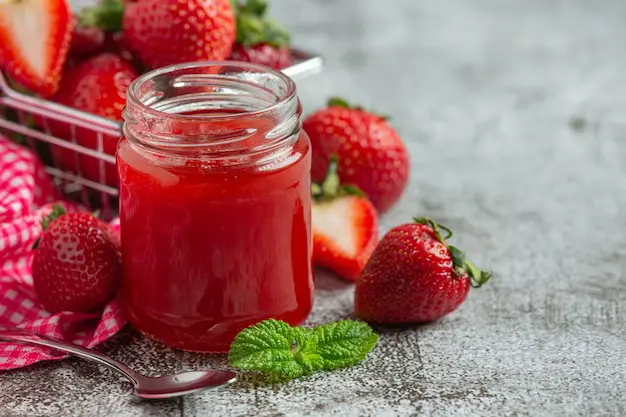Jams and jellies are sweet, semi-solid spreads. Strawberry jams in making jellies from filtered fruit juice and jams made from fruit pulp. In order to form a gel, they have to have the right balance of Strawberry jams and its jelly between water, sugar, and acidity.
Pectin can form a network in the water, trapping the rest of the nutrients to form a gel. However, she does not do this independently. Sugar and the pH of food also play a major role. The final sugar concentration for jams and jellies should be between 55 – 65%.
As you mentioned, the consistency of the jelly also depends on the pH of the fruit juice. The juice should be acidic enough, which makes it impossible for the gel to form. However, when the pectin is neutralized, it binds to form a gelatinous network.
If you’re working with juice that has a naturally high pH, you can lower the pH with artificial acids. An interesting point to note here is that the jam or jellies don’t have to be from fruit. You can also use vegetables. The important thing is to get the balance right so you don’t get the mid-life crisis of strawberry jam.

What is the strawberry jam midlife crisis:
The term “strawberry midlife crisis” in the title I provided was a figurative and metaphorical use to illustrate the challenges strawberry breeders may face in the middle of their life season or in the middle of their strawberry production career. This title does not refer to a real crisis facing strawberries specifically.
Materials and equipment for strawberry jam:
To make good strawberry jam, equipment must be chosen carefully
- stove
- Stainless steel bowl
- mixing spoon
- Gram scale
- Jam jars (8 ounces) and lids
- Refractometer
- pH scale.
prepare strawberry jam:
The production of good strawberry jam must be done in carefully thought-out steps according to the following:
- Weigh 450 grams of healthy fresh strawberries
- Remove the sepals (green leafy life structures) and wash the strawberries
- Use a knife to cut the strawberries into small pieces
- Add the strawberries to the pot and then add 60ml of water
- Cook on the stovetop to soften the strawberries (this should take about 5 minutes).

- Add 0.5 g of acid. (Note: This should raise the pH of the following which is desirable for the preparation of jam. You can check the pH using a pH meter)
- Bring the mixture to a boil and then add the sugar while mixing
- Bring back to a boil and cook for 3-5 minutes, continuing to mix. This will avoid caramelizing the sugar and off-tasting flavor
- Be sure to set the jam by placing a drop of jam in a cup of cold water. If the droplet remains lumpy, the jam is set. If it breaks down, the jam needs more time to cook.
- Once set, pour the jam into 8-ounce jars. It should yield approximately three jars. (Note: Be careful! The jam is very hot and can cause serious burns.)
- Seal the jars, label them, and allow them to cool until the next lab session
- When you return, run the following tests on your crowding
- pH
- Brix (This is the term used for sugar percentage. You need a refractometer for this)
- Taste test with crackers or bread
Production pressures and short seasons
Strawberry breeders live in a race against time, as the strawberry production period is short and intense. This limited time puts additional pressure on strawberry breeders, increasing production and marketing challenges

Technology and environmental challenges:
Strawberry breeders find themselves facing ongoing technological challenges and environmental changes that affect traditional farming methods. How do they adapt to these developments to maintain their production?
Paying attention to health and safety to avoid the strawberry jam midlife crisis:
Health and safety concerns are increasing in society, and this means additional challenges for strawberry breeders in terms of agricultural practices and quality requirementsز
To read more about jams, click here
To know more about the secrets of food manufacturing and perfect quality, please visit our website or contact us

